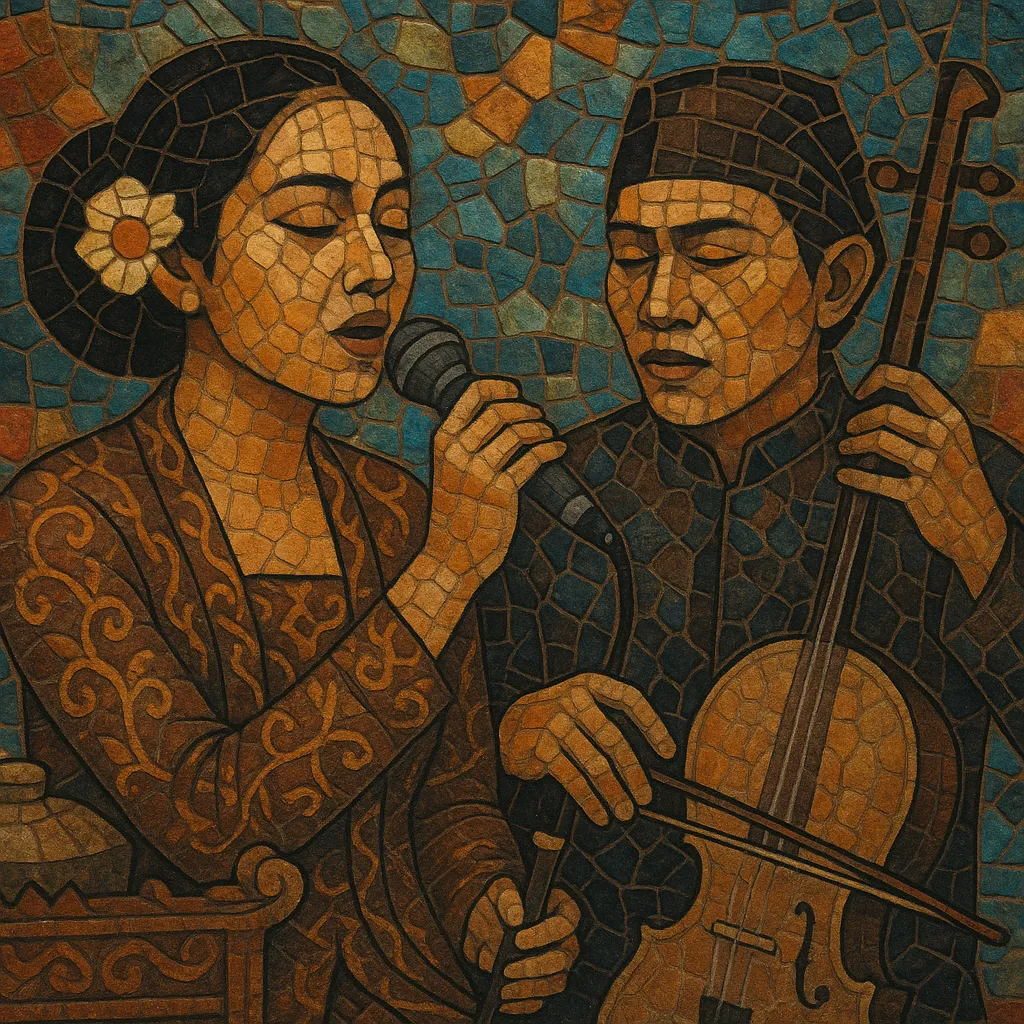Lagu Jawa (literally “Javanese songs”) is a Javanese‑language song tradition that bridges classical Javanese aesthetics with Indonesian popular music formats.
Its melodies often trace back to gamelan’s sléndro and pélog tonalities, while its arrangements borrow from keroncong’s string textures and, later, dangdut and campursari rhythm sections. Vocals feature ornate cengkok and sindhen-inspired melismas, and lyrics alternate between ngoko and krama registers of the Javanese language, exploring love, longing, humor, and everyday life.
Today, Lagu Jawa spans classic langgam Jawa, cassette-era campursari, and contemporary “Pop Jawa,” thriving on radio, wedding stages, and digital platforms alike.
Javanese song practice predates recording, rooted in tembang macapat poetry and courtly as well as village repertoires accompanied by gamelan. Early 20th‑century recording and radio spread Javanese-language singing, while keroncong ensembles introduced guitar, cak–cuk (ukulele), and bass textures to local ears.
The modern, named stream of Javanese-language popular songs coalesced around langgam Jawa in the 1950s–60s. Artists adapted gamelan-like melodic contours to the keroncong ensemble, bringing Javanese prosody and ornamentation to mass audiences. Radio broadcasts and labels popularized the style across Central and East Java, with stars like Waljinah defining the idiom.
From the late 1980s into the 1990s, Manthous and peers formalized campursari—literally “mixed essence”—fusing langgam/keroncong elements with gamelan, keyboards, and dangdut grooves. Cassettes, VCDs, and touring ensembles carried the sound to weddings and town squares, making Javanese-language pop a regional mainstay.
YouTube and streaming catalyzed a new wave (often labeled Pop Jawa), where singer–songwriters and bands modernize harmonic progressions and production while retaining Javanese texts and cengkok. Didi Kempot’s heartbreak anthems (“ambyar”) reached national and diaspora audiences; younger acts such as Denny Caknan, Ndarboy Genk, and Guyon Waton blend acoustic pop, rock, and dangdut-koplo energy with Javanese lyricism.


